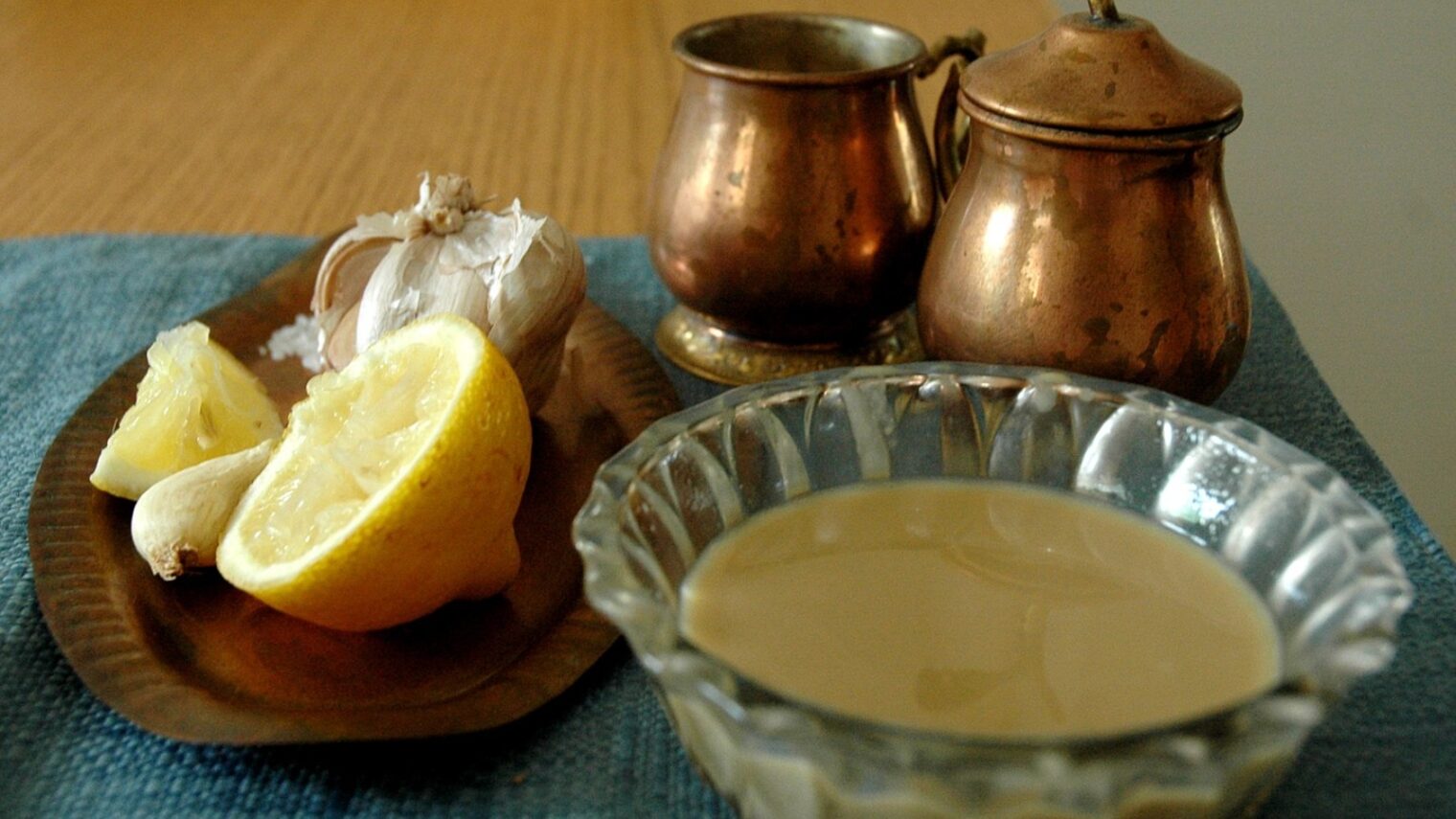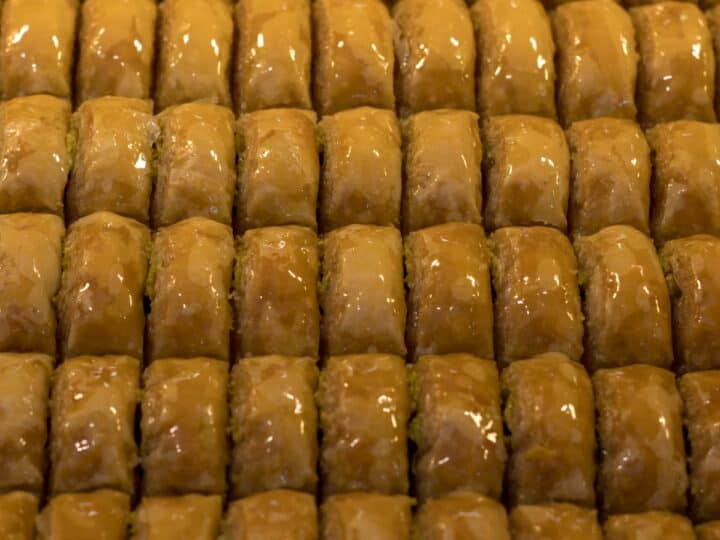Food sites are full of recipes containing tahini — from brownies to tahini-encrusted fish or tahini-drizzled grilled cauliflower.
But for an Abu Ghosh producer and purveyor of this thick, nutty sesame paste, it’s all about the tradition, not the trend.
Kamel Hashlamon, the well-known Arab chef behind the tahini and halva maker Al Yasmin, gives a quizzical look when commenting on how pervasive tahini has become worldwide.
“It’s in all kinds of dishes — vegan, dairy, meat, fish and even desserts. Of course tahini is important in the Levantine kitchen, but we use it in a simple way. We add lemon juice, garlic and some yogurt and eat it over fresh or cooked vegetables.” he tells ISRAEL21c.
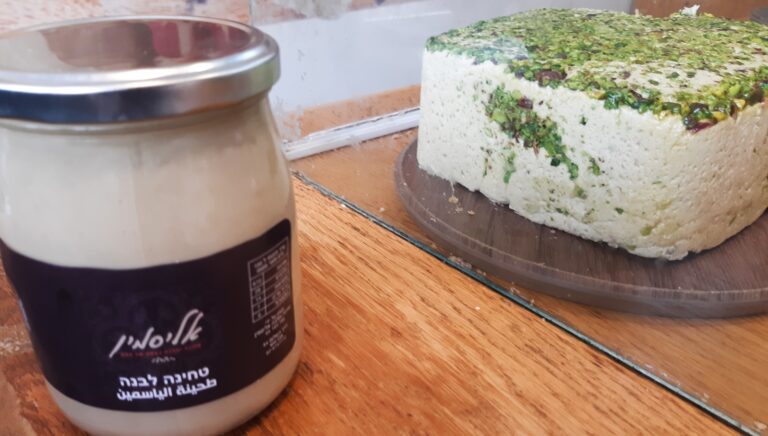
Hashlamon explains that tahini is not only for eating. His grandmother swore by it as a remedy for coughs or as an anti-inflammatory reducing the pain of arthritis.
“They even knew that it is better absorbed into the system when combined with vitamin C, so the lemon juice is added not just for taste.”
Culinary rock star
As a child growing up in East Jerusalem, Hashlamon remembers that sesame seed oil was sold for frying as it can withstand high temperatures. Now cheaper and less healthful canola and sunflower oils have substituted it, he laments.
Tahini became Hashlamon’s passion after he closed his restaurant, Turkiz, in 2017. Located in the St. George hotel on the seam of east and west Jerusalem, Turkiz showcased high-level Levantine cuisine and turned the chef into a rock star within the local culinary scene.
“Israeli chefs were hungry to learn more deeply about baladi (local) cuisine — anything that was not just kebabs and 10,000 salads. I opened the door to dishes such as arrayes (meat-stuffed pita pockets) and showed that a good tabbouleh saladis not only about using the right ingredients but has to be chopped correctly too.”
An intense period of political unrest in Jerusalem and the ensuing drop in the number of diners was the reason Hashlamon decided to shutter his restaurant.
He then spent two years doing stints in top Israeli restaurants and began to focus his attention on learning all he could about tahini to connect to his “roots and go back to the basics.”
Intoxicating aroma
The chef spent a lot of time in Nablus learning from experienced tahini producers and then teamed up with Murad Julani, an East Jerusalem importer of sesame seeds, to open Al Yasmin.
This boutique tahini operation is situated on the main thoroughfare of the pretty village of Abu Ghosh, a Jerusalem suburb that attracts hordes of Israelis on weekends to its Middle Eastern-style restaurants.
Al Yasmin consists of a back room where sesame seeds toast in a large trough, and the store where you can see tahini being made in the press.
Five kilograms of sesame seeds are released down a chute every 20 minutes and then ground between two circular white basalt stones (quarried in Aleppo, Syria) giving off an intoxicating nutty aroma as the warm liquid runs into the canal below.
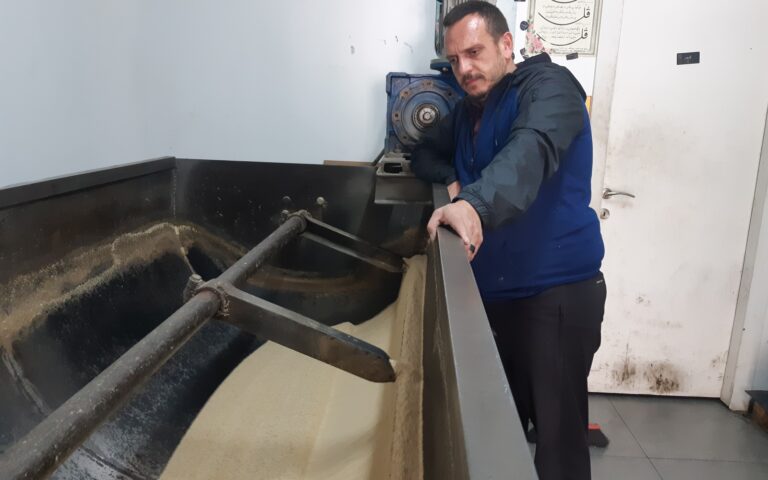
On the day ISRAEL21c visited, there was a constant stream of Israelis and foreigners passing through. Hashlamon offered samples from the line of open jars next to the press.
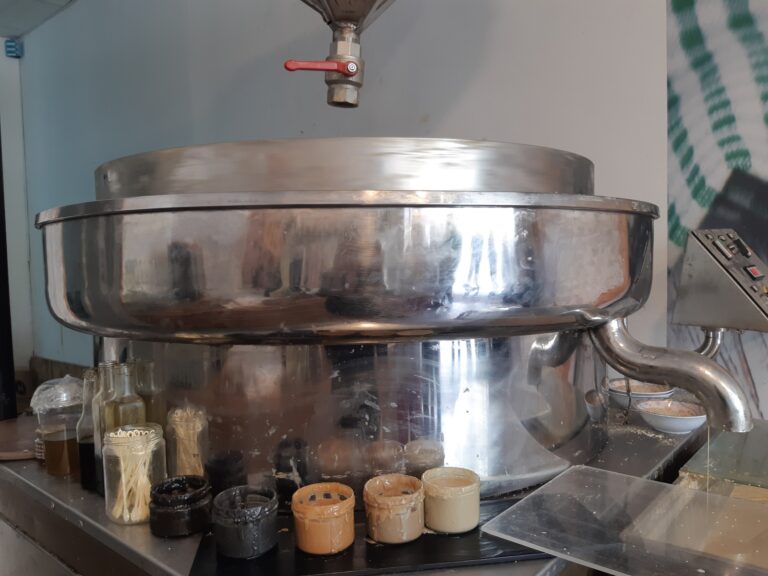
There is classic white tahini made from cold-pressed sesame seeds; a darker version made from unshelled seeds; a golden brown tahini made from sesame seeds toasted for eight hours (it has a distinct taste of peanut butter) and for the adventurous, a charcoal black tahini.
All are made with imported sesame seeds from Gadarif, Sudan, while the black tahini is made from Indian sesame seeds.
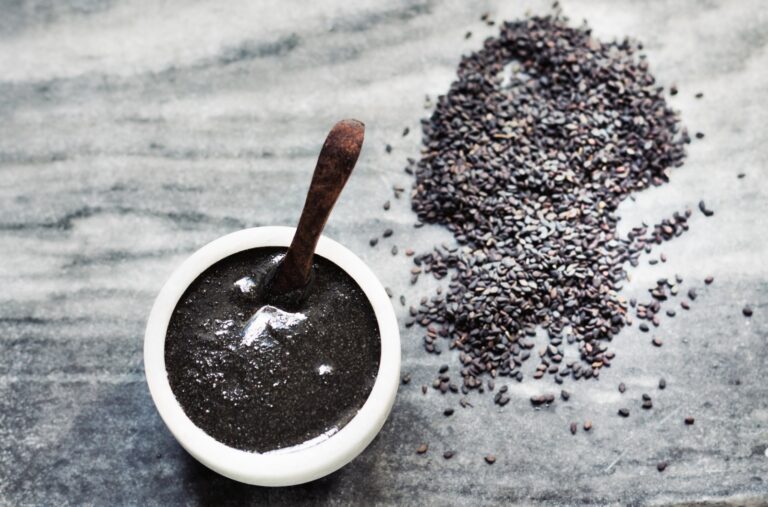
Heavenly halva
Behind the glass display cabinet are long blocks of halva, a confection made from tahini and other ingredients.
In addition to plain, there is a choice of halva with additions of ground coffee/cardamom, pistachio nuts, candied orange and lemon peel cubes, dried rose petals or dark chocolate.
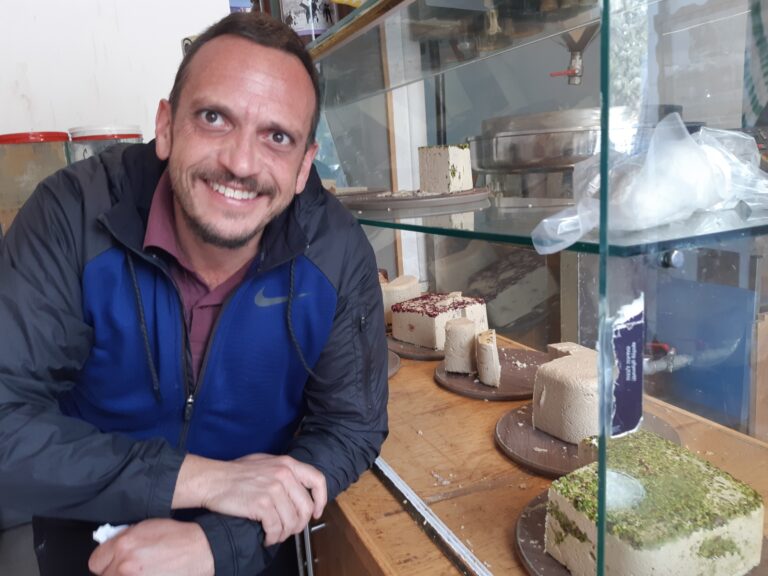
One tourist from California who buys the rose petal halva declares it “heaven.”
I try a sliver of citrus halva and it is a melt-in-the-mouth experience with a delicate taste and none of the sickly sweetness of the mass-produced variety.
Hashlamon shows the tourists a gnarly saponeria root and explains that to make halva its juice will have to be extracted and cooked with sugar until it becomes a meringue-like foam to which tahini and honey wax are added.
Regular commercial halva contains only 35 percent tahini with added glucose and sugar while “real” halva, he says, is 65% tahini and has no added sweetener.
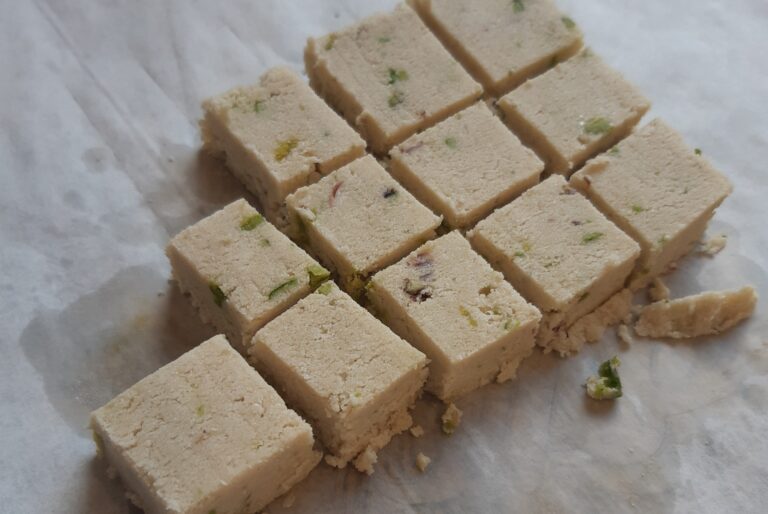
There is also lots to learn about how to store tahini and halva: “If the oil separates, turn the jar over for a day and let it seep back in. Keep tahini out the fridge like you would olive oil and it will last for two years. If you put halva in the fridge it will turn into a sticky goop!”
Locally sourced seeds?
Hashlamon’s taste buds have also been put to good use by plant scientist Prof. Zvi Peleg, whose Hebrew University laboratory has spent years developing a sesame plant in Israel that can compete with the low price of the foreign product which decimated the local market in the last 40 years.
Since major suppliers in the world have lost entire annual crops through flooding (India) and civil war (Ethiopia), this Israeli innovation could stave off acute shortages and high prices that currently exist.
In a recent tasting session held at Al Yasmin, Hashlamon was given five types of tahini made from these new cultivated strains.
“I had no doubt in my mind which one was the winner. It only had a number, but soon I hope it will be given a name and we will have locally sourced sesame seeds once again.”




